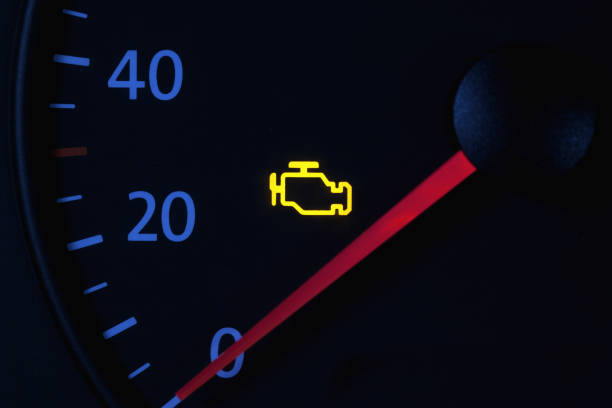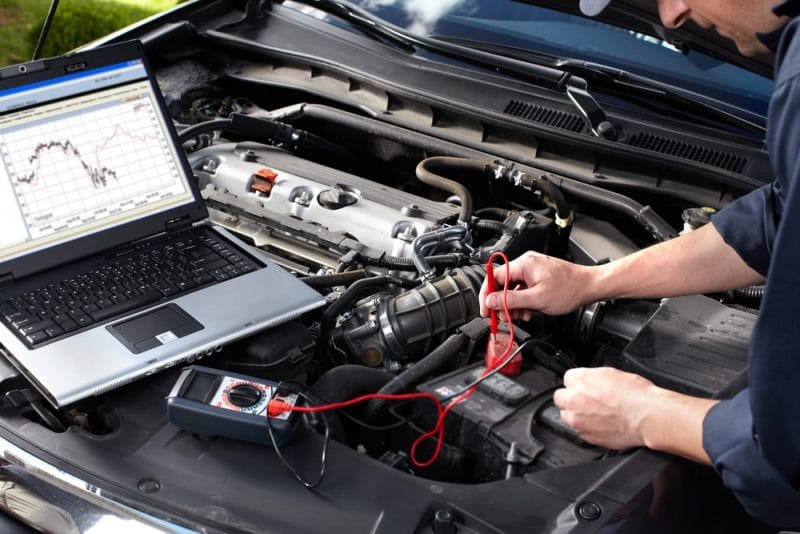ECM (engine control module) is an integral part of every vehicle to ensure that the car engine operates at optimal performance. There are many cases where your car has problems and cannot start due to a faulty ECM. Therefore, knowing the symptoms of a bad ECM and finding solutions to tackle them timely is important for car owners to pay attention. Let’s roll your sleeve and find out:
Contents
What Is ECM In Car and How Does It Work?
ECM is an electronic control unit that manages the engine only. What does an ECM do? Encompassing with associated actuators, sensors, and fuel injection…The ECM manages all requirements for engines, prioritizes, and then implements them. Examples of requirements include accelerator pedal position and exhaust system requirements for mixture composition. Torques serve as a key criterion for implementing all requirements.

Generally speaking, ECM is considered “A brain” behind your car’s brawn and it’s an on-board computer that controls literally everything your engine does and optimizes the air-to-fuel ratio. Receiving information from various sensors on the vehicle, then analyzes and adjusts engine operation and fuel consumption, ensuring optimal efficiency and power. Generally, the ECM operates in 3 specific stages as follows:
- Input: ECM updates information from sensor devices including intake air flow sensor, speed sensor, temperature sensor… and on and off signals, as well as modules.
- Processing: After collecting data, the ECM will determine the technical parameters, calculate, and make decisions to direct specific activities for each part in detail.
- Output: The ECM controls and manages all engine operations
After understanding the notion of ECM you might have a question “Are ECM and PCM different in a car?” Our answer is “Yes”. PCM (Powertrain Control Module) is a powertrain system that includes: the engine, clutch, and transmission. So PCM control for both the engine and gearbox. While ECM as we said above is designed to control and optimize the engine.
To put it simply, the (PCM) includes an engine (ECM) + transmission (TCM) + … so: PCM = ECM + TCM. Now you may have the basic knowledge related to the ECM, let’s move to the next part to learn about the ECM failure symptoms.
>> Read more: How ECU and PCM Work as a Car Brain Box
4 Symptoms Of A Bad ECM You Should Be Aware
ECM plays a vital role in modern vehicles, so When the ECM has any problems, it can cause all kinds of problems with the vehicle, and in some cases even cause your car not to work. A bad ECM can produce any of the following 5 symptoms to alert the driver to a potential problem:
1. Check engine light
If there are any problems with the circuit or sensors, the Check Engine light will turn on. However, sometimes there is no error but the light still lights up due to confusion of the ECM. Therefore, to determine the exact cause, the driver needs to give the car to a repair center for assistance in scanning the trouble code according to the manufacturer’s instructions.

2. Having engine problems
Unusual engine operation is an indication that the engine control model is faulty. The consequences are that your engine can’t work or turn off suddenly. Over time, if not fixed timely, the symptoms will be more severe and eventually can cause the electronic system to go bad.
3. Having difficulty starting
When the ECM completely fails, the vehicle will be difficult to start or even unable to operate. You need to immediately contact repair and maintenance centers for timely support.
4. Consumes a lot of fuel
The ECM performs the task of circulating the exact fuel level to provide for the combustion process by monitoring moving conditions such as position throttle, current engine load, etc. Therefore, if the engine control module fails, the vehicle will consume more fuel. To reduce fuel consumption during operation, drivers should regularly check the above parts.
To handle this problem, technicians will carry out repairs according to the following steps:
Step 1 – Check whether the crankshaft (Camshaft) sensor is working properly or not.
Step 2 – Inspect whether the sensor connector and wire are in good or damaged condition.
Step 3 – Check the condition of the crankshaft signal disc. Good, dirty, or broken.
Step 4 – Take a look at whether the crankshaft sensor and phase sensor wires are in good condition.
Step 5 – After checking, if any part is found to be defective. Technicians will disassemble, repair, and reassemble as the original condition.
Watch more:
What Are The Reasons Of A Bad ECM?
To know the exact causes of a faulty ECM, you need experienced technicians and engineers with the support of modern equipment, it is possible to accurately determine the cause of damage to the ECM. However, according to statistics, ECM false is often due to the following common causes:
– Voltage Overload – This is due to an actuator short circuit or solenoid short circuit.
– Environmental factors such as air humidity, and oxidation… cause the jack pins to rot and become damp.
The vehicle often has to travel through bad roads, causing the ECM to vibrate strongly. Causing the details in this part to suffer many physical impacts leading to damage.
>> Related post: Camshaft vs Crankshaft: Working Methods Explained
Wrapping Up
Car ECM is an important part, directly affecting the engine’s performance. Parts such as camshaft, brake force, fuel pump, ignition,… must all comply with the decision of the engine control module. Therefore, drivers should regularly take their vehicles to maintenance centers to receive support for periodic inspections, early detection, and treatment of damage to ensure safety when driving the vehicle and handle the ECM problems timely.



